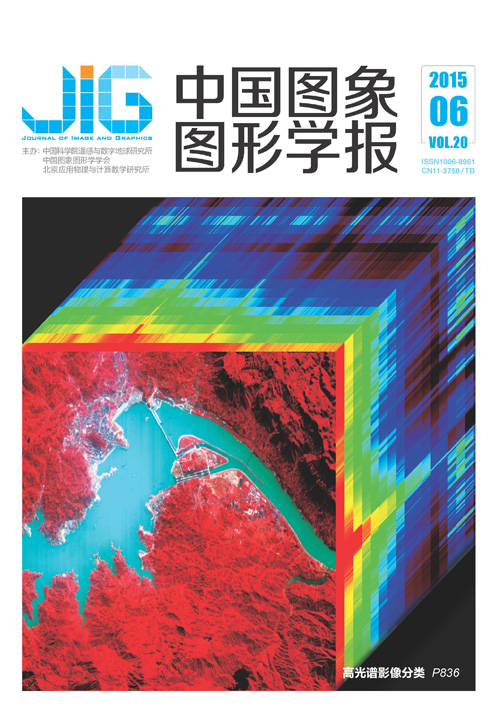
结合梯度信息的特征相似性图像质量评估
摘 要
目的 图像的边缘信息对于图像质量的评估非常重要.基于底层特征的图像质量评估算法(FSIM),虽然考虑了图像的底层特征,但该算法对边缘信息的识别能力不理想.针对以上问题,将FSIM算法与对边缘信息更敏感的梯度结构相似度(GSSIM)算法相结合得到一种既符合人眼视觉系统特点又能有效识别图像边缘的新的图像质量评估算法(FGSIM).方法 该算法将FSIM算法的相位一致性部分与GSSIM算法的提取图像信息的部分相结合从而得到一种新的图像质量评估算法FGSIM.其中,采用相位一致性表示图像的特征,用于保持评估算法接近人类视觉系统的特点,提取图像信息的部分通过图像的梯度来实现,用于更有效的识别图像边缘.结果 分别使用FSIM、GSSIM以及FGSIM算法对不同运动模糊程度、不同高斯模糊程度以及不同高斯噪声的图像进行质量评估,将得到的数据用曲线图表示,从图中可以看出:在运动模糊实验中,随图像模糊程度的增大,FGSIM算法的数值由0.8943下降到0.3443,变化更加明显,对运动模糊表现出更好的敏感性;在高斯模糊和高斯噪声实验中,FGSIM算法数值变化的程度虽然不如GSSIM算法好,但相较FSIM算法有一定的提高.FGSIM算法在公共测试图像库中与FSIM、GSSIM算法进行实验比较,FGSIM算法的散点图较FSIM算法稍差些,但与GSSIM算法相比具有非常大的改进,其散点图比GSSIM更为集中.采用较为常用的衡量评估方法性能的指标:皮尔逊相关系数、斯皮尔曼秩相关系数、KROCC 和均方根误差对评估算法的性能进行衡量,数据显示,FGSIM算法的性能比GSSIM算法好.结论 实验结果表明,FGSIM算法是一种既符合人眼视觉系统特点又能有效识别图像边缘的新的图像质量评估算法,该算法对边缘信息的识别能力更强,对图像质量的变化更加敏感.
关键词
Image quality assessment of feature similarity combined with gradient information
Miao Ying, Yi Sanli, He Jianfeng, Shao Dangguo(Institute of Information Engineering and Automation, Kunming University of Science and Technology, Kunming 650500, China) Abstract
Objective The edge information of images is important in image quality assessment. Nonetheless, the image quality evaluation method of feature similarity (FSIM) based on low-level features is not ideal for edge information detection although this algorithm considers the significance of low-level features. On the basis of the information provided above, this study combines the FSIM algorithm with the grid scheduling simulator (GSSIM) algorithm, which is sensitive to edge information, to generate the new image quality assessment method FGSIM. The new method is not only consistent with the characteristics of human visual systems, but it can also identify image edges effectively.Method The algorithm combines the part of FSIM that represents phase consistency with the component of GSSIM algorithm that can extract image information to generate the new image-quality assessment method FGSIM. The use of phase congruency represents image features, the part of phase consistency that can be used to keep the algorithm close to the human visual system, and the part of the GSSIM algorithm that can extract image information realized by Gradient. This part can be employed to identify image edges.Result FSIM, GSSIM, and FGSIM algorithms were used to evaluate images containing different motion blurs, and graphs were constructed to represent the obtained data. In the motion blur experiments, the numerical value of the FGSIM algorithm declines from 0.8943 to 0.3443 with the increase in image blur. Changes are significant, and the motion blur is highly sensitive. In the Gaussian blur and Gaussian noise experiments, the changes in the numerical degree value of the FGSIM algorithm are superior to those in the FSIM algorithm to some extent, although the former is inferior to the GSSIM algorithm. Experimental results on public image quality databases show that the scatter diagram of the FGSIM algorithm is slightly inferior to that of the FSIM algorithm. However, the former is significantly better than that of the GSSIM algorithm. Furthermore, the scatter diagram of the FGSIM algorithm is more concentrated than that of the GSSIM algorithm. The FGSIM algorithm also performs better than the GSSIM algorithm in terms of Pearson correlation coefficient, Spearman rank-order correlation coefficient, Kendall rank-order correlation coefficient, and root mean square error. These factors are commonly used to measure performance.Conclusion Experimental results indicate that the FGSIM algorithm is a new image-quality assessment method that is not only consistent with human visual system characteristics but can also identify image edges effectively. Thus, this algorithm can identify edge information well and is sensitive to variations in image quality.
Keywords
|



 中国图象图形学报 │ 京ICP备05080539号-4 │ 本系统由
中国图象图形学报 │ 京ICP备05080539号-4 │ 本系统由